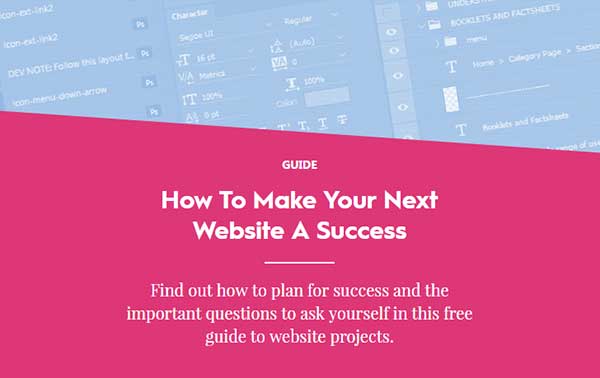Developing a new website is a complicated endeavour, with a huge number of factors competing for your time and attention. I sat down with Paul Coffey, our Production Director and some of the team here at Coast Digital, to talk about how content and website projects intersect – this article will cover some of the ideas and thoughts that came out of that discussion.
We’ve found, time and time again, that while elements like user research, visual design and the build itself are typically at the forefront of our clients’ minds, there’s one element of a new website that tends to fall by the wayside.
That element is content. In this article, we’ll look at why content is an important part of your website project and how to understand the effects – both positive and negative – it can have on the rest of the build.

Content and Your Project Plan
When you’re looking at mapping out your timings for your new website project, it shouldn’t be a question of if you’re going to sort content for the website but rather when.
Content is always part of a website project. Even if you aren’t planning on doing any rewrites, you still need to get a handle on how much content you’re going to port across, how it’s going to be formatted, if there’s any content you want to delete, and whether there are any risks from an organic search perspective.
So, when? Well, in our experience the earlier the better. Producing real content early in the project is beneficial for many of the activities that need to happen. Let’s look at the positive effects of having actual content early.
1. The Advantages of Early Content
Having content earlier allows us to make the initial outputs of a website project more realistic and beneficial to the final product.
This can start as early as the user research phase. Having a handle on the tone and messaging of the site allows you to tailor your research – you can look to understand user and customer motivations in relation to your messaging and content. This can then help you to assess how effective your messaging is and how relevant it is to your users.
Wireframing with real content means you can be more realistic with the amount of space required for text. This allows us to create more useful wires – it’s easy to fill a prototype full of lorem ipsum, but once that real content comes in it can quickly break layouts and leave your developer with a tough task ahead.
This also applies to visual design. If you have content ready to go, then the design can be created with the content in mind – this in turn reduces the need for re-styling of pages when the build finishes. You can start tweaking the styling of content at this early stage, and then when it comes to final content loading you will already know how it works and even potentially have a head start.
2. When Content is an Afterthought
As mentioned earlier, the many elements of your website project are likely to pull you in a multitude of different directions. This can result in content becoming a bit of an afterthought – which can in turn have some negative knock-on effects on your project.
Content should be at least as important as the visual design of your website, as it’s your content that explains your proposition and tells your brand story.
If you go through the whole process with dummy content, only to implement the real content at the end then this can have a number of repercussions.
As mentioned earlier, this might leave you needing to do remedial work on your layouts. It could also have an impact on the kinds of styling options you have available based on your design – after all, if the designer wasn’t working with actual content, they won’t have known the kinds of content layouts and styles that were destined to be on the site.
Adding content at this late stage ultimately leaves you at the behest of the back-end content editor. This can lead to restrictions in styling as mentioned above, and potential length limitations that may not suit the content you have.
All of this can then lead to change requests or potentially a phase 2 that is focused around allowing you to have the ability to put in the content you need.
Thankfully, all this hassle can be avoided simply by creating real content earlier in the project – once you’re working with at least an example of final copy, it becomes possible to design and build assets that are ready to accommodate what you really need.
3. Content is Just One Part of the Puzzle
While getting your content in early should help you ensure that the early outputs of your website project are more practical, content is only one part of the very complex puzzle that is a new website.
If you’re looking at starting a new website build, we have a guide that may be able to help – How to Make Your Next Website a Success.

